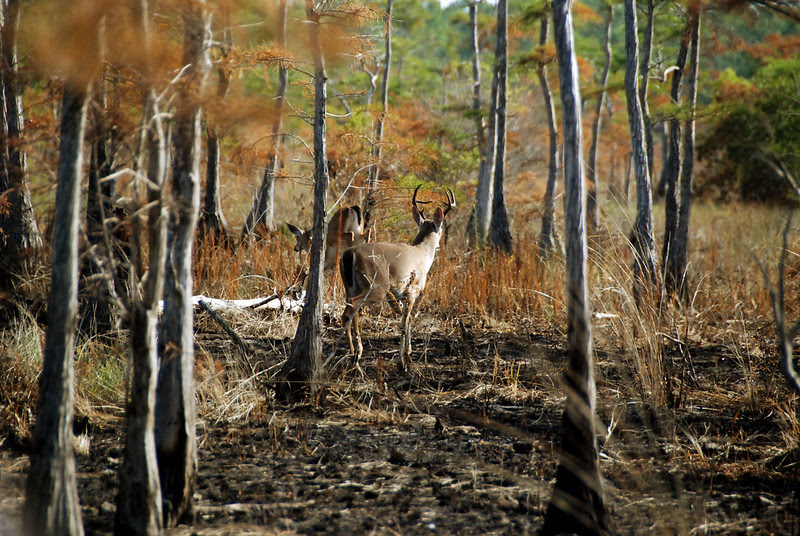LOCAL
Deer in Houston county farm tests positive for chronic wasting disease
A case of chronic wasting disease (CWD) has been confirmed in a two-and-a-half-year-old white-tailed deer on a deer farm in Houston county. The deer was tested after it had died. The Minnesota Board of Animal Health (BAH) reports that the herd has been quarantined, and the Board is currently investigating herd records and movements for the past five years as per federal program standards.
This is the first confirmed case of CWD in Minnesota since July 1, 2020. This farm is however in an established CWD endemic area since it is within 10 miles of an area where last fall three wild deer tested positive. Based on information from the Minnesota Department of Natural Resources (DNR), the Minnesota Board of Animal Health establishes endemic areas 15 miles around confirmed CWD cases in the wild. This farm in Houston County is in the southeast CWD management zone which was established by the Department of Natural Resources in 2018.
As part of CWD surveillance, the DNR is testing wild deer that were killed by hunters in Houston County. This initiative is however on a voluntary basis this year, due to the COVID-19 pandemic. Hunters play a large role in the surveillance and therefore control of CWD in Minnesota; more information is available at z.umn.edu/CWDHunterToolkit.
CWD is a fatal disease that affects cervids including white-tailed deer. Although found globally and in a number of US states, this disease remains relatively less common in Minnesota. There is no known cure or vaccine against CWD and consumption of meat from infected animals is discouraged.
Minnesota Board of Animal health
United States Animal Health Association (USAHA)
Minnesota department of natural resources
NATIONAL
COVID-19 is disrupting the US mink fur industry: Thousands of mink dead in Utah and Wisconsin, new deaths in Michigan
More than two hundred thousand lives have been claimed by the coronavirus pandemic in the United States, but humans are not the only mammals who are at risk of dying from the virus. Thousands of mink have died in fur farms in the United States after catching the SARS-CoV 2 virus. According to CBS news, more than 12,000 mink have died in Utah and Wisconsin, causing more than a dozen fur farms to go into quarantine. The United States Department of Agriculture (USDA) has additionally confirmed new mink deaths in Michigan. Impacts have also been felt in Europe.
In Wisconsin, the largest mink fur producer in the United States generating over a million pelts annually, a spokesperson for the Wisconsin Department of Agriculture, Trade and Consumer Protection (DATCP) told CBS News on Friday that “the outbreak is confined to a single farm, which is now under strict quarantine. More than 2,000 mink on that farm have died so far from the outbreak”.
According to the USDA, in all affected US farms, the minks are believed to have been infected by farm-workers, since these farms have previously reported human COVID-19 cases. According to the USDA there is no evidence that mink can transmit the virus back to humans. The USDA has released interim guidelines for managing SARS-CoV-2 in farmed mink.
Older mink (1-4 years) are more at risk of death from COVID-19 than the younger ones below one year. In mink, the disease presents with symptoms similar to those in humans, fundamental among them is difficulty in breathing. The major difference is that disease progresses faster in mink, causing death less than 2 days after the onset of symptoms.
More information about SARS-CoV-2 cases in animals can be found on the USDA website.
CBS news
The United States Department of Agriculture
Utah Department of Agriculture and Food
INTERNATIONAL
African swine fever (ASF) in Germany
Cases of African swine fever (ASF) have recently been reported in Germany. The first ASF case was detected in a wild boar on 10th September 2020, in the state of Brandenburg. Since then over 65 cases have been confirmed by the Friedrich-Loeffler scientific institute (FLI), Germany’s national institute for animal health.
ASF is a devastating viral disease of domestic and wild pigs, which can lead to mortalities of up to 100% in infected animals. There is no vaccine or prophylaxis for ASF. Control is carried out through mass culling of exposed and sick animals, and through controlling movement of animals and animal products from outbreak areas to disease-free areas.
This ASF outbreak is likely to cause widespread disruption in the pork market in Europe, where Germany is the largest pork producer.
Strict international trade restrictions are usually applied to countries that report ASF, due to its role as a transboundary animal disease (TAD) reportable to the World Organization for Animal Health. This is because the virus is highly contagious and can remain infectious in meat, contaminated farm equipment, vehicles used to transport animals, clothing, and shoes, and in the environment for a long time.
Germany now faces import bans on pork from a growing list of countries. Currently, Argentina, Brazil, China, Japan, Mexico, Singapore, South Africa and South Korea have imposed import bans. This ban has led to a 14% reduction in the price of pork in Germany due to the excess of offer into the national market. This downward pressure on pork prices is likely to be experienced by other countries across the European Union.
The Pig Site
Agriculture and Horticulture Development Board (AHDB)-UK
Reuters
|

